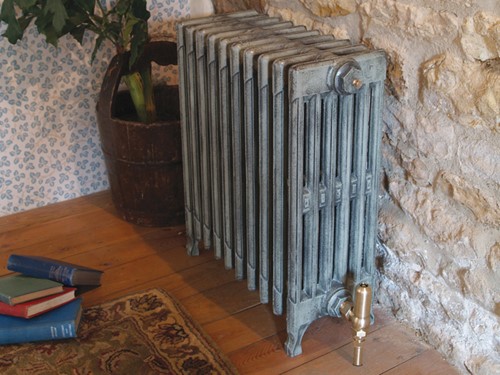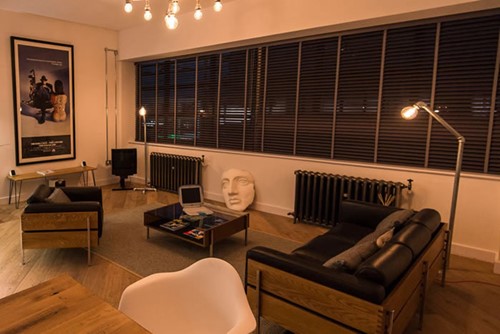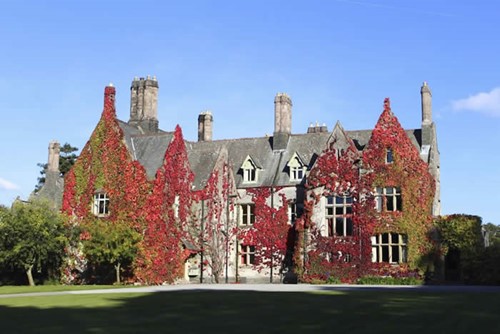Posted: Wednesday, August 3, 2022

If you live in a listed building, then modern cast iron radiators that feature period designs are the perfect way to keep your home efficiently heated all-year-round. However, before you move forward, there are some important pieces of information you need to know. Keep reading to find out more…
The first thing you’ll want to do is ensure you have all of the permissions you require.
These permissions vary depending on the exact nature of the work to be carried out as well as the features of interest that may be present in your listed building.
The permissions you require can include:
Note - unauthorised work on a listed building is a criminal offence. Not only are individuals liable to prosecution, but all work carried out may have to be reversed. If in doubt, always speak to your local authority first.
Aside from securing the necessary permissions, there are a few other points to consider when buying and installing new cast iron radiators in a listed building.
Before work begins, it is recommended that a structural survey of your listed building is carried out.
A good structural survey will establish the routes that your central heating pipes take through the building, as well as highlighting any load bearing issues e.g. floors which may not be able to support the weight of a radiator.
One of the most important, yet arguably subjective, things to think about is the setting in which you are installing your radiators.
According to Historic England, the national body that helps protect England’s heritage, cast iron sectional radiators should be set against brick or stone walls (or other patterned surfaces).
Interestingly, Historic England suggests that ‘one piece cast replicas of the real cast iron sectional radiators’ should be avoided. They also recommend that owners of listed buildings should avoid plain faced steel radiators and other types of basic radiator too.
Instead, Historic England states that owners of historic buildings should buy good quality, sectional cast iron radiators which are of the same or similar style to original period cast iron radiators.
Note - Trads only supplies sectional cast iron radiators.
Another important point to consider is the way in which the installation of your cast iron radiators is carried out.
Guidance issued by Historic England states that:
‘Work should be carried out in such a way as to not damage or should minimise the loss of, and permanent scarring to, historic fabric (such as old walls, floors or ceilings). You should only carry out the minimum amount of work that involves disturbing existing historic fabric.
Where such work is needed, keep as much of the original fabric as possible and position any new or additional items discreetly where possible and where their function is not compromised’.
It’s important then, that you or the people you choose to carry out the installation, do so in a historically-sensitive way.
Where possible, installers should retain and even make use of existing features such as mouldings and skirting boards which can be used to mask or at least partially hide pipework.
Installers should also avoid techniques such as destructive chasing and creating new openings and cuts into the fabric of the building.
If this is unavoidable, then they should make cuts and chases which can accommodate more than just pipework alone and allow for other services to use them - thus reducing the total number of cuts into the fabric of the building during a renovation project.
Are you intending to install cast iron radiators as part of a broader renovation project?
Then it’s important to think about the stage of the project at which you’ll require your new radiators. You don’t necessarily want to receive them at the very beginning of the project, as you’ll have to find somewhere to store them until they are required.
Instead, consider making use of phased deliveries.
Here at Trads we are able to offer phased deliveries, ensuring that your new radiators only arrive on site when you need them.
In order to achieve the very best outcome to your home heating project in a listed building, you should work with a radiator supplier that has extensive experience supporting heritage projects.
A cast iron radiator supplier such as Trads understands the complexities that are sometimes associated with fitting new radiators into a listed building.
Plus, as mentioned above, Historic England advises that you should avoid cheap, one piece cast iron replicas, and instead choose sectional cast iron radiators that are faithful reproductions of period models.
Below are just a few of the historic buildings to which Trads has supplied cast iron radiators.

When Elevate Property Group and D5 architects decided to renovate Concord House, a 1930s warehouse and convert it into a series of New York loft living style flats, they chose Trads cast iron radiators as they perfectly complemented the design and decor of the building.

Dating back to the 1870s, Lingholm on the Lingholm Estate, is a stunning Victorian mansion which is best known for being the place where Beatrix Potter spent many summers.
When the mansion was purchased by new owners in 2013, Trads was called upon to provide their expert advice.
There followed a period of consultation, which entailed several onsite visits by the Trads team in order to establish specific requirements and to establish which radiators would be best suited to Lingholm’s Gothic Revival style.
The owners of Lingholm were delighted with the results, commenting on how wonderful it is to see the Estate keeping true to the character of the house, retaining the integrity of the property.
We hope you’ve found Trads’ guide to selecting and fitting cast iron radiators in a listed building both useful and interesting.
As a company that has an extensive and proven track record in supporting heritage projects with their heating requirements, we invite you to explore our complete range of sectional cast iron radiators and to contact us if you have any questions whatsoever. You can reach our friendly, expert team on 01400 263320 or by email at: sales@tradscastironradiators.co.uk
For more cast iron radiator buying advice and information, explore the Trads blog…
Period Home Renovation - How Can Trads Help? | How Many Radiators Do I Need? | Choose Trads for Energy Efficient Radiators
< Back To Blog